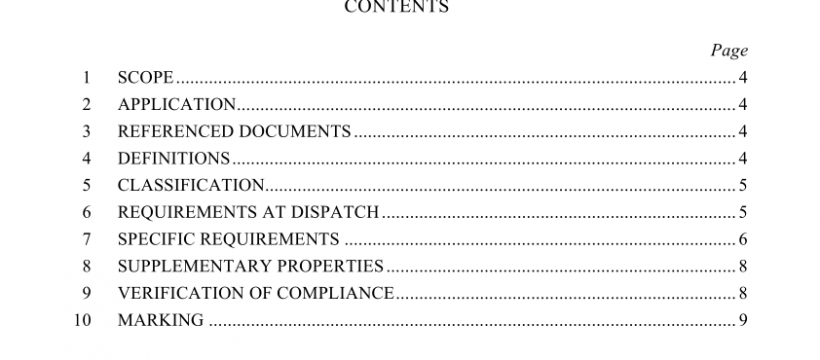AS NZS 1859.1:2017 pdf free download
AS NZS 1859.1:2017 pdf free download.Reconstituted wood-based panels— Specifications
7.3 Upper specification limits
The requirements in Tables 3 and 4 are the upper specification limits for the following properties:
(a) Thickness swelling.
(b) Thickness swelling after cyclic test.
The 95-percentile values, based on the mean values for individual panels and calculated in accordance with AS/NZS 4266.1 (as referenced in Clause 9), shall be equal to or less than the upper specification limits in Tables 3 and 4.
7.4 Moisture resistance
Requirements for moisture resistance are dependent upon the test method employed to assess these properties. Thus, two alternative sets of requirements (Option 1 and Option 2) are set out in Table 4 corresponding to the two principal recognized methods of evaluation.Compliance shall be shown with only one of these two options, as follows:
(a) Option 1 Requirements apply to those particleboards subjected to an accelerated aging test consisting of immersion in water at 70°C followed by determination of the wet bending strength as described in Method A of AS/NZS 4266.1.
(b) Option 2 Requirements apply to those particleboards subjected to an accelerated aging test, the so-called ‘cyclic test’ described in AS/NZS 4266.1.
NOTE: Moisture resistance testing is not intended to prove durability of a new resin system but to confirm the correct processing of panels made from a resin system proven to provide the required durability.
8 SUPPLEMENTARY PROPERTIES
For certain applications, information on some of the properties listed in Table 5 may be required. On request, this information shall be supplied and, in this case, it shall have been derived using the test methods listed in Table 5.
10 MARKING
Each panel and/or pack of panels shall be marked legibly at the point of manufacture either by indelible direct printing or by an adhesive label with at least the following information:
(a) The manufacturer’s name, trademark or identification mark.
(b) Reference to this Standard, i.e. AS/NZS 1859.1.
(c) The nominal thickness.
(d) The formaldehyde classification.
(e) The batch number, or the production week and year.
(f) The classification, e.g. STD or MR.
NOTE: If relevant, the country of manufacture should be included in the marking label.
The percentage of recycled and/or reclaimed fibre used in manufacture may be claimed in product marking.
MR particleboards may be colour coded by the incorporation of a dye in the core layer of the panel. In addition, panels may be colour coded by the vertical application near one corner of a coloured stripe or stripes, approximately 25 mm in width. The colours shall be appropriate to the market into which the particleboards are being sold. Current practice is to use a green dye to differentiate MR particleboard.
AS NZS 1859.1:2017 pdf free download
